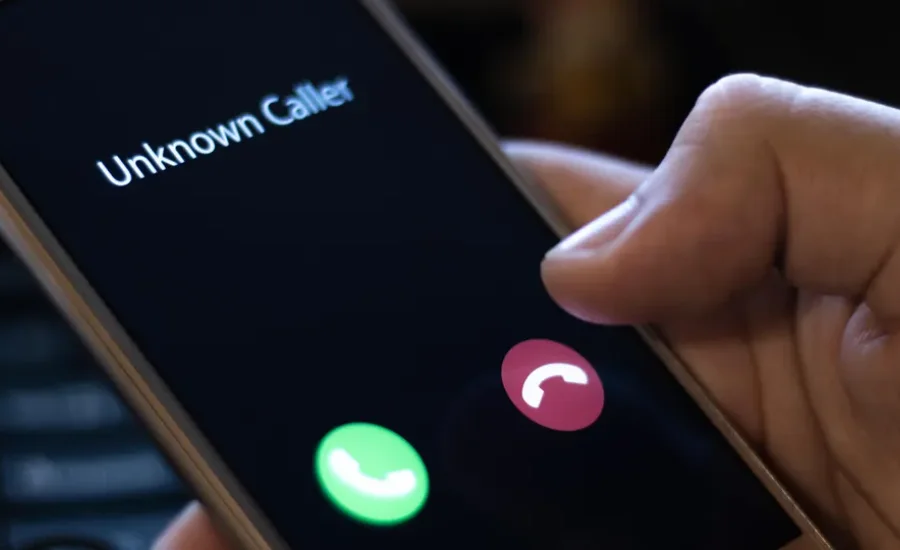Sudden shock hypnosis is a technique where a practitioner attempts to induce a hypnotic state almost instantly by startling the subject. This may involve snapping fingers, issuing loud commands, or making sudden gestures to catch the person off guard. While it has been sensationalized in movies and media, giving the impression of immediate results, the reality is far different. Sudden shock methods often fail to create the necessary environment for hypnosis, which relies on trust, comfort, and focus.
This article aims to uncover the truth behind sudden shock hypnosis doesn’t work, explaining why it doesn’t work and how hypnosis truly functions. We’ll explore the scientific principles of hypnosis, debunk common myths, and highlight proven techniques that deliver real results. By understanding these facts, readers can move past the misconceptions and gain a clearer perspective on effective hypnotic practices.
What is Sudden Shock Hypnosis?
Sudden shock hypnosis refers to an abrupt technique designed to induce a trance by startling or surprising the subject. Common examples include clapping, shouting commands, or using sudden physical movements to “shock” the mind into compliance. Historically, these methods gained attention in stage hypnosis, where they were used for dramatic effect rather than therapeutic effect. Media portrayals further popularized the idea, making it seem like hypnosis could be achieved with a snap of the fingers.
However, these methods lack the precision and reliability required for real-world applications. Hypnosis relies on gradually accessing the subconscious mind through relaxation and trust. Sudden shock fails to achieve this, as it creates a state of confusion or resistance instead. While it may work as a theatrical gimmick, it does not hold up as a legitimate therapeutic tool.
The Science Behind Hypnosis
Hypnosis is a natural condition where the mind enters a state of deep focus and heightened receptivity to suggestions. This state is usually reached through gradual relaxation methods that allow the conscious mind to step aside, enabling communication with the subconscious. Unlike common misconceptions, hypnosis isn’t about controlling the mind; it relies on the individual’s willingness and active participation. Scientific studies show that factors such as trust, relaxation, and suggestibility significantly influence hypnosis success.
Sudden shock hypnosis, on the other hand, disrupts this process. When startled, the brain activates the fight-or-flight response, releasing stress hormones that heighten alertness rather than relaxation. This physiological reaction makes it difficult for the mind to enter the calm, focused state required for hypnosis. Gradual techniques, like guided visualization or progressive relaxation, align with the brain’s natural tendencies and are supported by scientific evidence as effective methods for inducing hypnosis.
Why Sudden Shock Hypnosis Doesn’t Work
Sudden shock hypnosis has little to no scientific backing, and its methodology contradicts the principles of hypnosis. Rather than fostering relaxation, sudden actions like shouting or startling gestures trigger the body’s stress response. This creates a sense of discomfort or resistance, which prevents the subject from entering the calm, receptive state needed for hypnosis. Trust, a critical factor in successful hypnosis, is often undermined by these abrupt methods.
Additionally, sudden shock techniques raise ethical concerns. They can cause anxiety or even trauma in some individuals, especially those sensitive to stress. Practitioners who use these methods may harm their clients or lose credibility in the professional community. By contrast, evidence-based approaches like progressive relaxation and guided visualization emphasize trust and cooperation, offering safer and more effective alternatives. These methods demonstrate that hypnosis thrives on comfort and mutual understanding, not shock or force.
Common Myths About Sudden Shock Hypnosis
Sudden shock hypnosis is surrounded by myths that exaggerate its effectiveness. One common misconception is that it works instantly, putting anyone into a hypnotic state within seconds. In reality, hypnosis is a process that requires time and preparation, as the mind needs to gradually relax and focus. Sudden shock methods cannot achieve this, making the myth of instant hypnosis largely unfounded.
Another myth is that sudden shock hypnosis can hypnotize anyone, regardless of their mental state or willingness. However, individual suggestibility and cooperation are crucial factors for hypnosis success. Finally, people often confuse sudden shock hypnosis with stage hypnosis, where participants appear to enter a trance immediately. These performances are often prearranged, with highly suggestible individuals chosen for dramatic effect. Understanding these myths helps clarify why sudden shock hypnosis is not a practical or reliable technique in real hypnotherapy.
Effective Alternatives to Sudden Shock Hypnosis
Effective hypnosis techniques focus on relaxation, trust, and collaboration. One proven approach is progressive relaxation, where the practitioner guides the subject to relax each part of their body step by step. This helps the mind enter a calm, focused state, making it more receptive to suggestions. Guided visualization is another method, where vivid imagery is used to immerse the subject in a soothing mental environment.
Ericksonian hypnosis, a more modern technique, uses indirect suggestions and storytelling to communicate with the subconscious. These approaches prioritize creating a safe, comfortable space for the subject, which is essential for meaningful hypnosis. Unlike sudden shock methods, which rely on abrupt and unreliable actions, these techniques build trust and engagement, leading to more effective and lasting results. By focusing on scientifically supported methods, hypnotherapists can help clients achieve their goals without the risks associated with sudden shock hypnosis.
Expert Opinions and Case Studies
Experts in psychology and hypnotherapy agree that sudden shock hypnosis is ineffective and potentially harmful. Studies show that successful hypnosis depends on trust and relaxation, neither of which are fostered by sudden shock methods. For instance, a controlled experiment comparing sudden shock to gradual induction found that participants in the gradual group were far more likely to achieve a trance-like state.
Case studies further reveal the shortcomings of sudden shock techniques. In one instance, a hypnotherapist attempted a sudden shock approach with a client, resulting in confusion and resistance rather than relaxation. By contrast, practitioners using progressive relaxation consistently report positive outcomes. These findings emphasize the importance of evidence-based methods and highlight the risks of relying on outdated or unproven techniques like sudden shock hypnosis.
Risks and Consequences of Believing in Sudden Shock Hypnosis
Believing in sudden shock hypnosis can lead to unrealistic expectations and poor outcomes. Individuals may feel disappointed or frustrated when these methods fail, which can erode trust in hypnosis as a whole. This skepticism may prevent them from seeking legitimate hypnotherapy services that could genuinely help them.
Sudden shock methods can also pose psychological risks. Abrupt actions may trigger fear or anxiety, especially in individuals who are already vulnerable. Practitioners who use these techniques may face criticism for prioritizing theatrics over client well-being. By understanding the limitations and risks of sudden shock hypnosis, people can make informed choices and seek out hypnotherapists who follow ethical, evidence-based practices. This ensures both safety and effectiveness in achieving their therapeutic goals.
The Origins of Sudden Shock Hypnosis: Fact or Fiction?
Sudden shock hypnosis originated during the early days of hypnotism, primarily as a theatrical tool used by performers to captivate audiences. The method involved startling actions like snapping fingers or issuing loud commands to supposedly induce a hypnotic state. It gained attention because of its dramatic appeal and the illusion of instant effectiveness. Early proponents argued that sudden shock bypassed the subject’s conscious defenses, leaving them more suggestible. However, these claims were based on anecdotal evidence rather than rigorous scientific validation.
Modern research has debunked the effectiveness of sudden shock hypnosis for therapeutic purposes. Hypnosis relies on creating a relaxed and focused mental state, which sudden shock actively disrupts. While it may briefly capture attention, it fails to foster the trust and comfort necessary for accessing the subconscious mind. Today, professional hypnotherapists rely on gradual induction techniques supported by science, rendering sudden shock hypnosis more fiction than fact.
The Neurological Impact of Sudden Shock: What Science Says
The brain’s response to sudden shock hypnosis doesn’t work is rooted in its fight-or-flight mechanism. When startled, the amygdala signals the release of stress hormones like adrenaline, which heighten alertness and prepare the body for immediate action. This physiological reaction is beneficial in emergencies but counterproductive for hypnosis, which requires relaxation and reduced mental stress. Sudden shock overwhelms the brain with stimuli, hindering its ability to enter a calm, focused state.
Scientific studies emphasize the importance of relaxation and trust in facilitating hypnosis. These factors lower stress levels and enable the subconscious mind to become more accessible. Sudden shock methods not only fail to create these conditions but can also provoke confusion or resistance. In contrast, gradual induction techniques align with the brain’s natural processes, making them safer and more effective for achieving therapeutic goals.
How Stage Hypnosis Misleads People About Sudden Shock Techniques
Stage hypnosis often presents sudden shock hypnosis doesn’t work as instant and effective, creating misconceptions about how hypnosis works. Performers use dramatic gestures, loud commands, and quick inductions to entertain audiences. However, these shows rely on pre-screened participants who are highly suggestible and willing to play along. The apparent success of sudden shock in these settings is more about theatrics than genuine hypnosis.
In clinical practice, hypnosis is a structured process that involves building trust and guiding the subject into a relaxed state. Stage hypnosis skips these critical steps, offering an exaggerated and misleading portrayal of hypnotic techniques. As a result, many people believe hypnosis is a form of mind control or that anyone can be hypnotized instantly, which undermines the credibility of evidence-based methods used by professional hypnotherapists.
Debunking Pop Culture Representations of Hypnosis
Pop culture often misrepresents hypnosis as a magical or manipulative tool that can instantly control minds. Movies and TV shows frequently depict hypnotists using sudden actions like snapping fingers or swinging a pendulum to induce a trance-like state. While these portrayals are entertaining, they perpetuate myths about hypnosis, overshadowing its real therapeutic potential.
In reality, hypnosis is a collaborative process that requires trust and relaxation. Sudden actions, as seen in pop culture, are rarely effective and often mislead people about what hypnosis entails. These misconceptions can discourage individuals from exploring hypnosis as a legitimate tool for personal growth or therapy. By debunking these myths, we can shift public perception toward a more accurate and informed understanding of hypnosis as a science-backed practice.
Why Trust and Comfort Are Key Components of Successful Hypnosis
Trust and comfort are essential for creating an environment where hypnosis can thrive. When a subject feels safe and at ease, their mind becomes more receptive to suggestions, allowing for a deeper hypnotic state. Research highlights that building rapport between the practitioner and the subject significantly enhances the likelihood of successful hypnosis. This connection fosters relaxation and reduces resistance, enabling the subconscious mind to engage with the process.
Sudden shock methods fail to establish trust and comfort. Abrupt actions can create fear or discomfort, which act as barriers to hypnosis. Without a foundation of trust, even the most skilled hypnotists struggle to achieve meaningful results. Gradual induction techniques, which prioritize building a cooperative relationship, are far more effective. These methods align with the principles of trust and comfort, ensuring that the subject feels supported and open to the experience.
The Psychology of Resistance: How Sudden Shock Can Backfire
Sudden shock hypnosis often triggers resistance instead of cooperation. When startled, the brain’s natural response is to protect itself, leading to heightened alertness and defensiveness. This state is incompatible with hypnosis, which requires a relaxed and open mind. The confusion or fear caused by sudden actions can make the subject distrustful, further reducing their willingness to participate in the process.
Effective hypnosis hinges on creating a sense of safety and collaboration. Gradual techniques encourage trust and reduce psychological barriers, enabling the subject to fully engage with the hypnotic state. Sudden shock hypnosis doesn’t work to create these conditions but often leave individuals skeptical of hypnosis altogether. By understanding the psychology of resistance, practitioners can focus on approaches that prioritize trust and relaxation, ensuring more reliable and positive outcomes.
Final Words
Sudden shock hypnosis, often dramatized in media, involves startling actions like snapping fingers or shouting commands to induce a trance. While entertaining, this method lacks scientific backing and fails to create the trust and relaxation necessary for effective hypnosis. Startling techniques trigger the brain’s fight-or-flight response, releasing stress hormones that disrupt focus and relaxation. This makes sudden shock methods unreliable and counterproductive in therapeutic settings.
True hypnosis relies on gradual induction techniques, fostering a calm and collaborative environment. Methods like progressive relaxation and guided visualization align with the brain’s natural processes, enabling the subconscious mind to become more receptive. Unlike theatrical gimmicks, evidence-based hypnosis builds trust and comfort, leading to meaningful results. By understanding these distinctions, individuals can recognize the limitations of sudden shock hypnosis and appreciate the effectiveness of scientifically-supported approaches in achieving therapeutic goals.
Discover the truth behind hypnosis with Brain Glower – where science meets clarity, and myths are debunked.




[…] that sufferers have get admission to to certified experts without having to go away their houses, making healthcare greater inclusive. For busy people, it offers a time-efficient option that integrates seamlessly with their way of […]